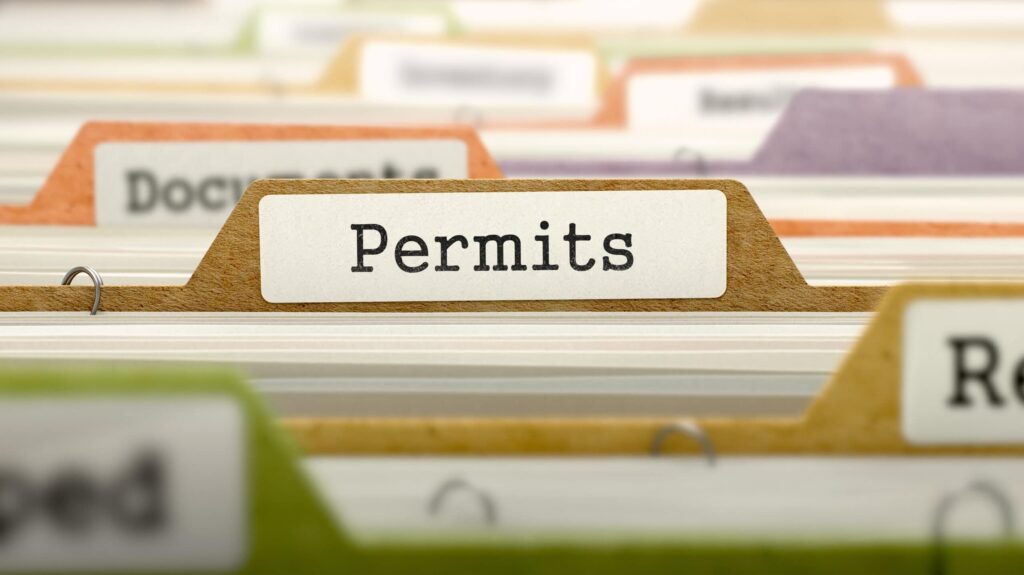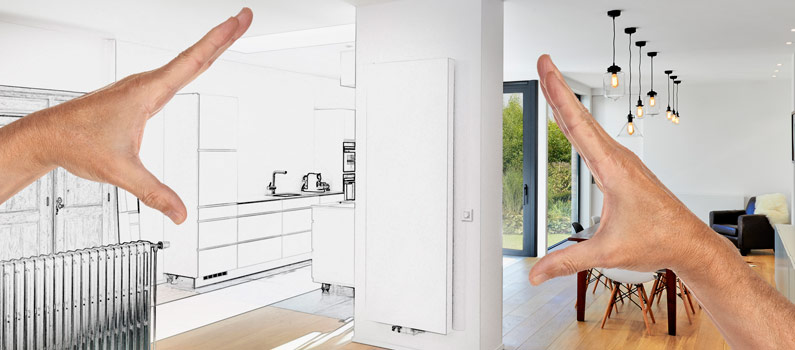Home remodeling projects can transform your living space and significantly increase the value of your home. Whether you’re renovating your kitchen, upgrading your bathroom, or planning a full-scale home renovation, careful planning is key to ensuring your project runs smoothly. For Canadian homeowners, there are unique factors like weather, building codes, and budget considerations that must be addressed. This step-by-step guide will help you plan a successful home remodeling project in Canada, from the initial concept to completion.

1. Set Clear Goals for Your Remodel
Before diving into your project, it’s important to define your goals and objectives. Knowing what you want to achieve will help guide every decision you make throughout the renovation process.
Questions to Ask Yourself:
- Why are you remodeling? Are you improving functionality, increasing space, updating aesthetics, or enhancing energy efficiency?
- What’s your budget? Setting a realistic budget from the start is crucial to avoid overspending.
- What’s your timeline? Consider when you want to start and finish the project, keeping in mind potential weather-related delays if you’re in an area with harsh winters.

Tip: Make a list of must-haves (essential changes) and nice-to-haves (optional features) to prioritize your spending and design choices.
2. Research and Gather Inspiration
Once you have a clear vision for your remodeling project, start gathering inspiration and ideas. Look at home design magazines, websites like Houzz or Pinterest, and visit model homes or showrooms to get a sense of what styles, materials, and layouts appeal to you.

What to Consider:
- Canadian weather considerations: If you live in a region with extreme winters, focus on energy-efficient solutions like insulated windows, high-quality roofing, and proper insulation.
- Long-term value: Think about how the remodel will impact your home’s resale value. Features like modern kitchens, eco-friendly materials, and functional layouts tend to attract buyers.
Tip: Create a mood board or digital folder to organize your ideas. This will be useful when you start communicating with contractors and designers.
3. Determine Your Budget
Your budget will be one of the most important factors guiding your project. Having a well-defined budget will help you make decisions on materials, scope, and design. Keep in mind that your budget should cover all costs, including materials, labor, permits, and any unexpected expenses.
Steps to Set a Realistic Budget:
- Research costs: Look into the average cost of similar projects in your area to get a sense of what to expect. For example, kitchen renovations in Canada typically range from $15,000 to $40,000 depending on the scope.
- Include a contingency fund: Set aside 10-20% of your budget for unexpected expenses, such as structural repairs or material delays.
- Get multiple quotes: When hiring contractors, always request detailed quotes from at least three different professionals to compare pricing and ensure you’re getting a fair deal.

Tip: Avoid stretching your budget too thin. If you can’t afford everything on your wishlist, focus on the most important aspects and save the rest for a future phase.
4. Hire the Right Professionals
Hiring the right contractor or design team is essential for a successful remodel. Whether you’re doing a small bathroom upgrade or a full home renovation, you want to work with professionals who are experienced, reliable, and fit your style and budget.
How to Choose the Right Contractor:
- Check for licensing and insurance: Ensure that your contractor is properly licensed and insured in your province.
- Look for experience: Choose contractors who have completed similar projects in your area, as they will be familiar with local building codes and climate considerations.
- Read reviews and ask for references: Check online reviews and ask for references from past clients to gauge the quality of their work and reliability.
Tip: Schedule a consultation with potential contractors to discuss your project, ask questions, and ensure they understand your vision.
5. Create a Detailed Plan
Once you’ve hired a contractor, it’s time to create a detailed remodeling plan. This plan should outline every aspect of your project, from the design and materials to the construction timeline and payment schedule.
What to Include in Your Plan:
- Project scope: Clearly define the full scope of the renovation, including which areas will be remodeled and the specific tasks that need to be completed.
- Materials: Decide on the materials you’ll be using, such as flooring, countertops, cabinets, and fixtures. Your contractor can help recommend materials that suit your budget and climate.
- Timeline: Work with your contractor to develop a realistic timeline for each phase of the project. Be sure to account for potential delays, especially during winter months when construction can be slower.
- Permits and approvals: Depending on the scale of your renovation, you may need permits from your local municipality. Your contractor should handle this, but be sure to verify that all necessary permits are obtained.
Tip: Include a communication plan with your contractor, outlining how often you’ll meet for updates and how you’ll handle unexpected changes.
6. Obtain Necessary Permits
In Canada, many remodeling projects require building permits to ensure the work complies with local building codes and safety regulations. Failing to get the proper permits can result in costly fines and issues when selling your home in the future.
Common Projects That Require Permits:
- Structural changes (e.g., removing walls, adding rooms)
- Electrical work
- Plumbing changes
- Major exterior work (e.g., roof replacement, new windows, or additions)
How to Get Permits:
- Work with your contractor: Your contractor will usually handle the permit process on your behalf. However, make sure they understand the local regulations in your city or province.
- Contact your local municipality: If you’re managing the project yourself, reach out to your city’s building department to find out which permits are needed for your specific renovation.
Tip: Ensure all required permits are in place before any work begins to avoid delays or legal issues.

7. Prepare Your Home for Construction
Before construction begins, take steps to prepare your home and minimize disruptions. This is especially important if you’ll be living in your home during the renovation.
Preparation Tips:
- Clear the area: Remove furniture, décor, and other belongings from the rooms being remodeled. This will protect your belongings and provide space for workers to move freely.
- Set up temporary spaces: If your kitchen or bathroom will be out of commission, set up temporary spaces for cooking, eating, and bathing in another part of your home.
- Communicate with neighbors: If the renovation will be noisy or disruptive, it’s a good idea to notify your neighbors in advance to maintain a positive relationship.
Tip: Consider staying elsewhere during major renovations to avoid stress and noise. If that’s not an option, designate a quiet space where you can escape the commotion.
8. Monitor the Progress
While your contractor will oversee the day-to-day work, it’s important for you to stay involved and monitor the progress of your remodel. Regular check-ins will help ensure everything is on track and prevent misunderstandings.

How to Stay Involved:
- Schedule regular meetings: Meet with your contractor at key milestones to review the progress, discuss any changes, and address potential issues.
- Document changes: If any changes to the original plan are needed, make sure they are documented and agreed upon by both parties to avoid confusion.
- Inspect the work: Periodically walk through the site to check for quality and ensure the work meets your expectations.
Tip: Keep an open line of communication with your contractor. Addressing concerns early can prevent them from becoming bigger problems later on.
9. Prepare for the Final Walkthrough
Once the renovation is nearly complete, it’s time for the final walkthrough. This is your chance to inspect the finished work and ensure everything is up to your standards.
What to Check During the Walkthrough:
- Quality of workmanship: Look closely at the craftsmanship of the work, including any details like trim, paint, and tile installation.
- Functionality: Test all appliances, fixtures, and systems to ensure they are working properly (e.g., test faucets, light switches, and doors).
- Finish details: Check for any remaining touch-ups, such as paint smudges, grout lines, or uneven surfaces.
Tip: Create a punch list of any final issues or touch-ups that need to be addressed before making your final payment.
10. Enjoy Your Newly Remodeled Home
Once all work is complete and you’ve signed off on the final inspection, it’s time to enjoy your newly remodeled home. Take pride in the effort you’ve put into planning and overseeing a successful renovation, and enjoy the improved functionality, aesthetics, and comfort of your living space.
Final Thoughts
Planning a successful home remodeling project in Canada takes time, preparation, and the right team. From setting clear goals to hiring a licensed contractor and staying involved throughout the process, each step plays a role in ensuring your project is completed on time, within budget, and to your satisfaction. By following this guide, you’ll be well-equipped to navigate your remodeling journey and create a home you’ll love for years to come.



